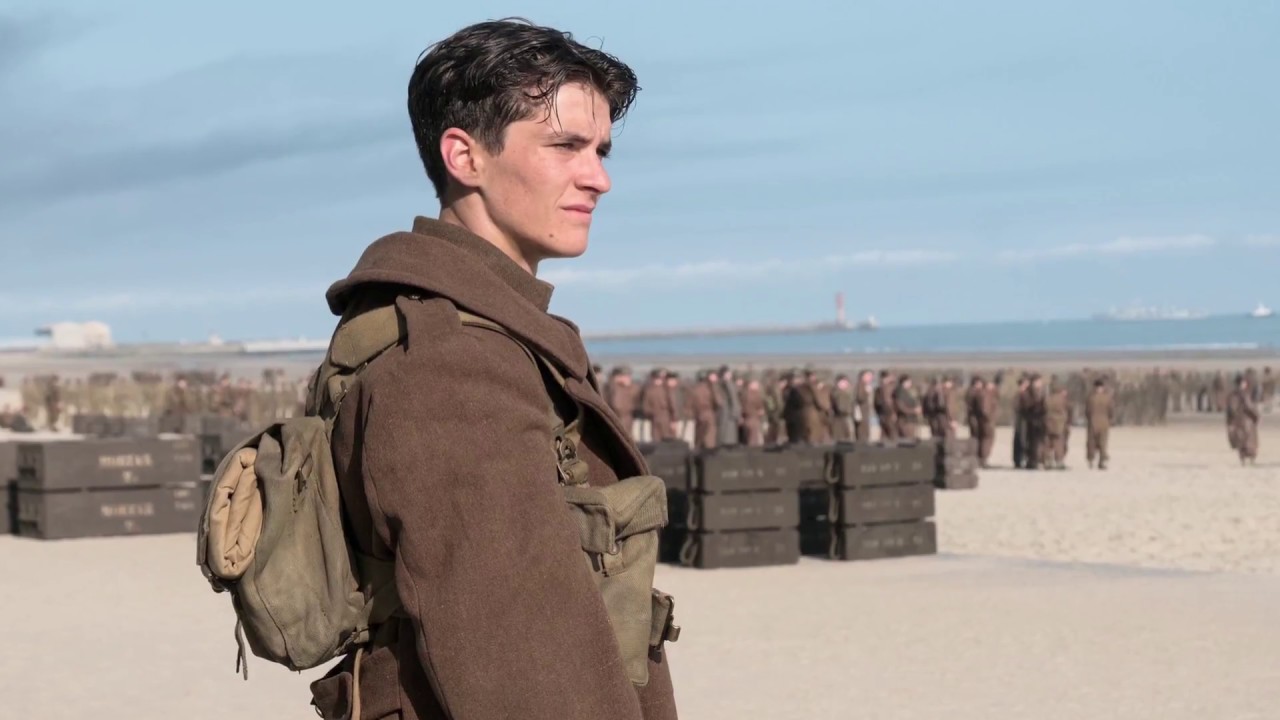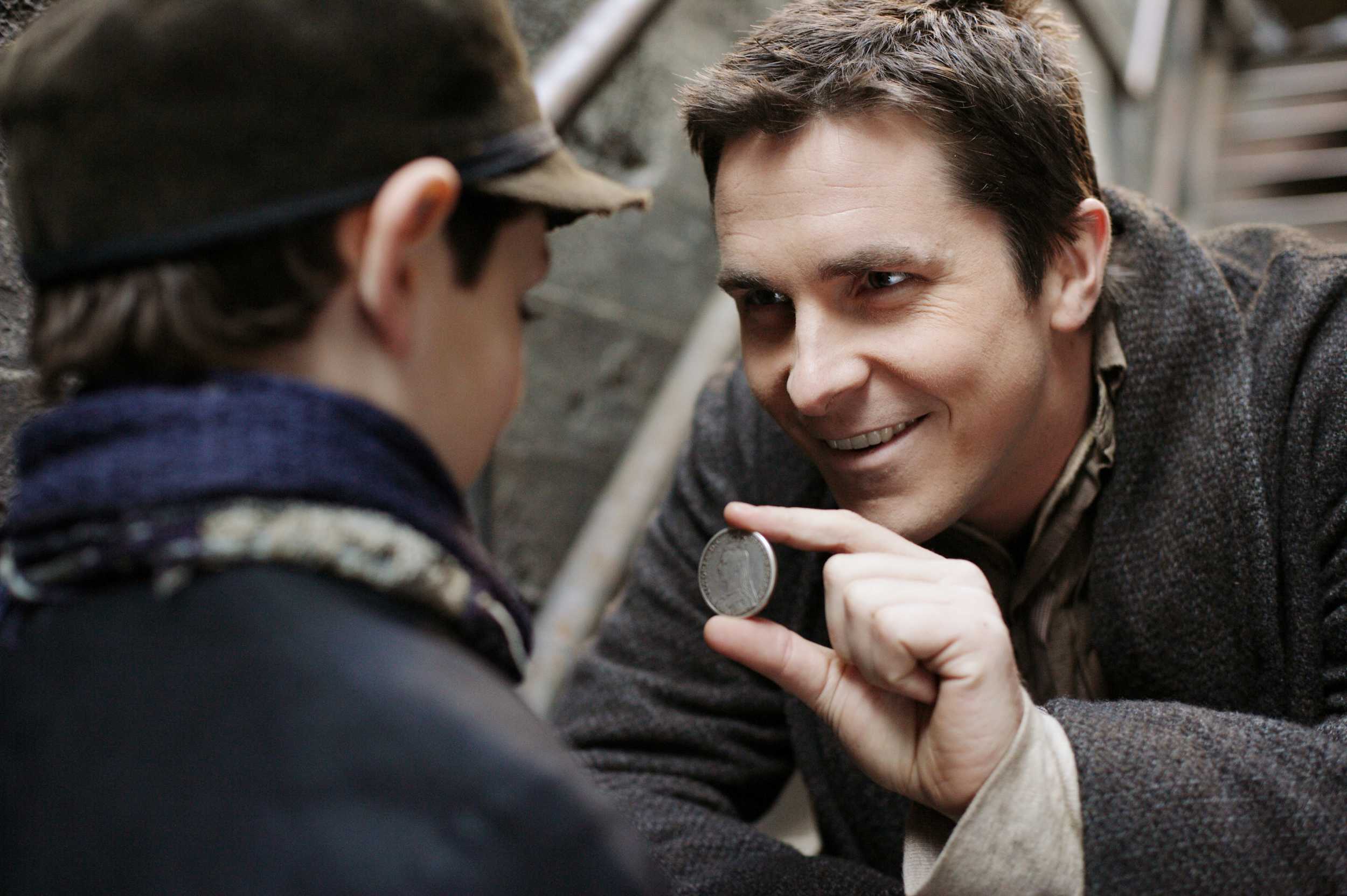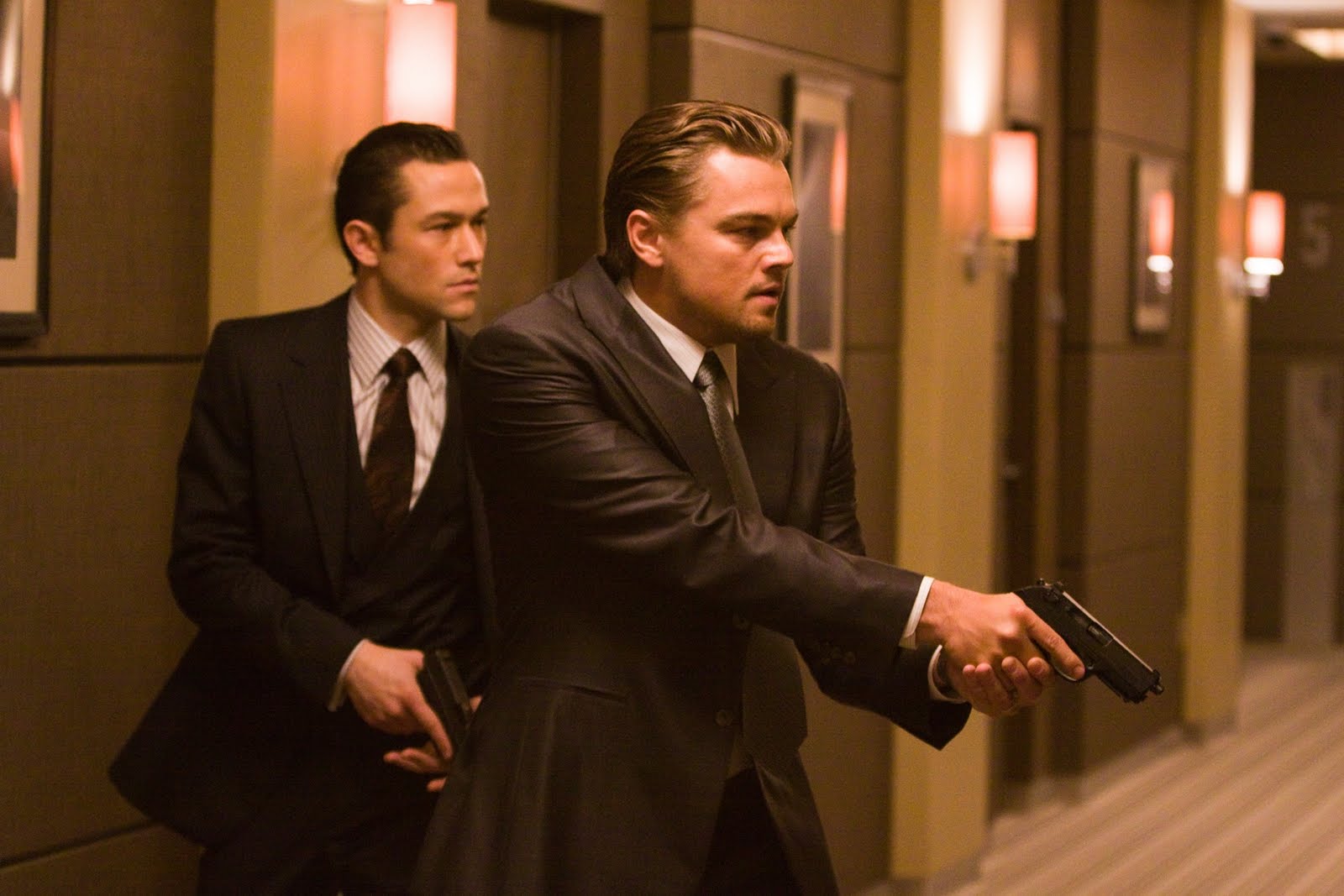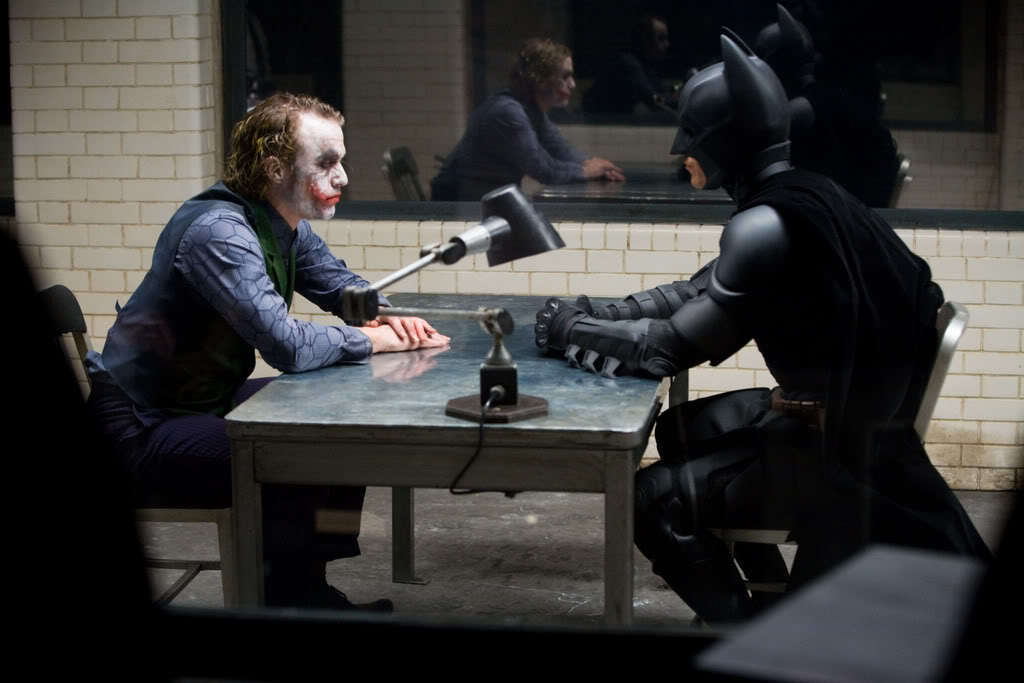5. Dunkirk (2017)

“Dunkirk” throws you right in the middle of World War II, in the days surrounding the famous evacuation of the same name. The amount of work that was put in the making of this film are tremendous, but the results are equally satisfying. “Dunkirk” doesn’t feel like a film, but like the real deal. It’s like Nolan and his crew teleported back in 1940 and captured history on screen.
Several people criticized the film for lacking empathy. In other words, “Dunkirk” misses a protagonist, the characters are one-dimensional and thus you can’t get to care for them. But they got it wrong. The protagonist of “Dunkirk” is you, the viewer, who for nearly two hours will know how it feels being part of one of the most significant historical events of the last century.
“Dunkirk” is a huge accomplishment which will surely achieve the status of a cinematic masterpiece in the years to come.
4. The Prestige (2006)

This movie has something very special about it, regarding Nolan’s overall cinematic style of telling a story. As well as a magician, he always has an ace up his sleeve in order to surprise the audience with an unexpected twist or a mind-penetrating indication, one that the viewer has to deal with even after leaving the cinema. Bearing that in mind, “The Prestige” is his closest approach on his own comprehension as a moviemaker.
The film tells the story of two rivaling magicians in the 19th century and stars Christian Bale and Hugh Jackman. Both opponents weave a web of intrigues and trickery in order to become the best magicians the world gets to see. Through the progress of the film, the audience understands that nothing is the way it seems. Offering a nonlinear narrative with some interesting twists, the viewer’s task is directly named in the movie’s script and articulated by Bale’s character: Are you watching closely?
Riding on his wave of success after innovating Gotham City and Batman, Nolan’s cast consists of numerous high-class actors such as Michael Caine, Scarlett Johansson, Andy Serkis and David Bowie. Aside from that, the production design is excellent, offering some fascinating settings (just think about the field of self-illuminating light bulbs or the duplicated top hats on Tesla’s estate).
“The Prestige“ might be one of Nolan’s most essential movies, regarding its nonlinear structure, the anamorphic look, and the interplay of reality and illusion, while following the protagonists in their inner conflicts and thematizing the axiomatic question of identity.
3. Inception (2010)

Nolan’s seventh feature film is a rare exemplar in today’s movie universe. It was a huge commercial success (to date it’s earned more than $825 million worldwide), while offering a highly complex and intellectual story. This movie might be the most obvious proof for Nolan’s achievement as a commercial director. His cinematic style combines mainstream and arthouse features in a very heterogeneous manner. With most of his movies he manages to address a populace, while challenging the audience with intellect-appealing narratives. “Inception” stretches this trait to the top.
Nolan’s general attitude of working is dominated by a very accurate and long-term writing process and pre-production. Many of his works are preceded by years of preparation, but “Inception” might be the most protracted project and an exceptional affair of his heart. He worked on his idea for “Inception” for nearly 10 years, resulting in a brilliant screenplay with a lot of intellectual depth, a compelling story, and an engaging end. His strong bond to the movie’s subject matter might be the parallels between dreaming and the pure nature of a film.
Like in the film’s narrative, the moviegoer enters the dream of someone (the director) when watching a film, resulting in the connection with the individual’s subconscious. Movies often contain dreamlike elements (in film theory described with the term “oneiric”) and on a scientific basis there are numerous commonalities between dreams and movies, but to examine these theories would crash the count.
With the movie’s narrative stretched over different layers of time, its story is about a so-called extractor (played by Leonardo DiCaprio) who infiltrates the subconscious of a selected target in order to extract valuable information. For this method, both participants have to enter an illusory realm built by the extractor’s mind.
The film has some very memorable shots to offer. The scenes, which take place in the character’s dream worlds, are especially fascinating (from the exploding café to the heaven-and-earth-sided Paris or the Penrose stairs). The cast is extraordinary with actors like Tom Hardy, Joseph Gordon-Levitt, Marion Cotillard, Cillian Murphy, Ellen Page and Michael Caine, and the Oscar-nominated music of Hans Zimmer is a masterpiece on its own.
2. Memento (2000)

Right after his successful debut “Following” in 1998, Nolan caused quite a stir in cinematic circles with his exceptional thriller “Memento”. Marking the first collaboration between him and his brother Jonathan during the writing process, the movie’s narrative is built in a reverse order. What might sound like a tensionless art film is one of the most suspense-loaded and original thrillers the world has gotten to see in the last 20 years.
It’s difficult to create empathy (and empathy is definitely one essential key to a well-working screenplay) for a character with an injury-caused short-term memory loss, simply because the conventional viewer can’t identify with such a giant handicap. The Nolan brothers solved this problem in a very smart and original manner. Because every scene is watched without knowing the previous events, the reverse narrative results in a strong bond between the protagonist’s fragmentary capacity for remembering and the audience’s notion.
Aside from that, the movie contains a voice-over in the shape of the protagonist’s memory-injured thoughts, in order to support the unorthodox narrative structure. This results in a stronger connection between audience and character.
“Memento” is a prime example of how to enlarge the suspense by giving the audience plot-solving hints piece by piece. As well as the movie’s protagonist, the viewer figures out the crime by getting fragmented pieces of information, and because of that, the recipient has the feeling of being directly involved in the resolution of the crime. The sense of understanding narrative connections inside a complex story is quite a satisfying one and “Memento” offers a lot of these moments.
With its experimental and highly innovative approach and the huge level of suspense, “Memento” deserves its high spot on this list and ranks in the Olympus of thrillers of the 21st century.
1. The Dark Knight (2008)

This movie’s screenplay is a prime example of antagonism in cinema. Referring to screenplay mastermind Robert McKee, a screenplay is just as compelling as the antagonistic forces allow it to be. The Joker challenges Batman at his biggest weak points. In the Joker’s world are no rules, while Batman always has to follow a strictly self-forced dogma.
This sense for morality, resulting in Batman’s denial of killing people, is constantly questioned by the Joker’s actions and unmasks Batman’s weak points to the people of Gotham City. This cancels the hero’s support by the city’s inhabitants, the police and the government, and gives him the image of a villain himself.
The Joker pushes the superhero in agonizing choices like the decision between Rachel and Harvey Dent, ending in the grief-fueling death of Wayne’s childhood friend. The stronger the character’s challenges are, the stronger the emotional and intellectual bond will be between the audience and the narrative.
Aside from the excellent use of antagonism, the script offers some memorable lines. Nolan is known for his screenplays containing Hollywood-style phrases, which sometimes work and sometimes don’t. But in “The Dark Knight” every of these catchy lines is well-included in the dialogue without being to placative or pseudo-philosophical.
From Alfred’s wise words (“Some men just want to watch the world burn”) to the villain’s two different stories about his mouth injuries (“Why so serious? Let’s put a smile on that face”) or the introduction of the Joker (“I believe whatever doesn’t kill you, simply makes you stranger”), the movie offers often-cited and outstanding phrases.
The score of Hans Zimmer and James Newton Howard is a musical tour de force and overbids their first collaborative work for “Batman Begins”. The theme for the Joker is truly great and perfectly captures the villain’s straight-lined and insane character with one steady tone vibrating and growing into a sonic blaze.
Some compositions are percussion-driven and loaded with tension, while others are the perfect musical treatment for the sinister underworld of Gotham City. The composer’s music offers first-class content, while addressing the heart, without sounding cheesy or too exerted.
Nolan’s biggest achievement with “The Dark Knight” is pushing the character depth of superheroes and their villains to another level. “Batman Begins” already had a lot of narrative depth to offer, but his second installment of the trilogy plays with heavier and more captivating themes. While being an overall entertaining and emotional movie, it offers brilliantly composed characters with fascinating and compelling arcs and marks Nolan’s best work to date.
Author Bio: Berlin-based Luc Hinrichsen has a bachelor’s degree in audio engineering and plenty of experience in scoring movies on his own. Beside that, he is an aspiring screenwriter and director always curious about enlarging his knowledge about film and it’s history.